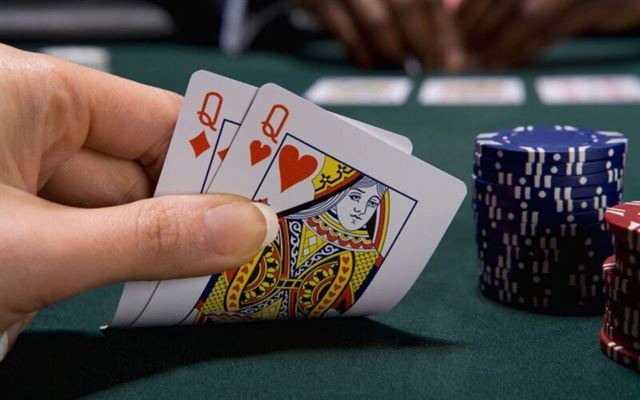Craps is a popular casino game that has a rich and colorful history. Originating from street games played in the early 19th century, it has evolved into a staple in modern casinos worldwide. This article explores the fascinating journey of craps, from its humble beginnings on the streets to its transformation into a thrilling casino game enjoyed by millions.
The Origins of Craps: Tracing the Casino Game’s History
The exact origins of craps are somewhat unclear, but it is believed to have originated in ancient Egypt or Rome. In these early versions of the game, players would roll dice made from bones or stones and bet on the outcome. The game was often played in the streets, where it gained popularity among the common people.
As time went on, craps made its way to Europe, where it underwent further changes and refinements. In medieval England, the game was known as “hazard” and was played by the nobility. It was during this time that the game began to take on some of the characteristics that are still present in modern-day craps.
In the 18th century, the game made its way across the Atlantic to the United States. It was in New Orleans that craps truly began to flourish. The game was played in the streets and on riverboats, and it quickly became a favorite pastime of the locals. However, it was also during this time that the game began to attract the attention of the authorities.
In an effort to regulate gambling, the authorities introduced a new rule that required players to use a table and a pair of dice. This rule change gave birth to the modern version of craps that we know today. The game became more structured and organized, and it began to attract a wider audience.
In the early 20th century, craps found its way into the glamorous world of casinos. It became a staple in the gambling halls of Las Vegas and Atlantic City, and it quickly became one of the most popular casino games. The game’s popularity continued to grow, and it soon became a symbol of the glitz and glamour of the casino industry.
Today, craps is played in casinos all over the world. The game has evolved even further, with new variations and betting options being introduced. Despite its long and colorful history, the basic rules of craps have remained largely unchanged. Players still roll dice and bet on the outcome, hoping to win big.
The Evolution of Craps: From Street Game to Casino Staple
In its early days, craps was known as “hazard” and was played by the working class in the streets of New Orleans. It was a game of chance, played with dice, and involved betting on the outcome of the roll. The rules were simple, and the game quickly gained popularity among the locals.
As the game spread beyond New Orleans, it underwent some changes. The rules were standardized, and the game became more structured. It was during this time that the name “craps” was coined, derived from the French word “crapaud,” meaning toad. This name was given to the game because players would often crouch like toads while playing on the streets.
With the rise of casinos in the early 20th century, craps made its way into these establishments. It was initially met with resistance from casino owners, who saw it as a game that was too unpredictable and difficult to control. However, as the game gained popularity among players, casinos began to embrace it and incorporate it into their offerings.
The introduction of the “don’t pass” bet in the 1920s was a significant development in the evolution of craps. This bet allowed players to bet against the shooter, adding a new level of strategy to the game. It also increased the house edge, making it more profitable for casinos.
In the 1930s, a man named John H. Winn made a significant contribution to the game of craps. He introduced the concept of betting on the “come” and “don’t come” lines, which allowed players to make additional bets after the initial roll. This innovation made the game more exciting and increased the potential for big wins.
The 1970s saw another major development in the evolution of craps with the introduction of the “free odds” bet. This bet allowed players to bet additional money on the point number after the come-out roll, without increasing the house edge. It was a game-changer, as it gave players a better chance of winning and made craps even more popular among casino-goers.
Today, craps is a staple in casinos around the world. It has evolved into a game that combines luck and strategy, with a wide range of betting options to suit different playing styles. The game has also embraced technology, with electronic versions of craps now available in many casinos.
Notable Figures in the History of Craps: Pioneers and Innovators
Craps, a popular casino game that has been enjoyed by millions around the world, has a rich and colorful history. Throughout the years, there have been several notable figures who have played a significant role in the evolution and development of this game. These pioneers and innovators have left an indelible mark on the world of craps, shaping it into the game we know and love today.
One such figure is John H. Winn, often referred to as the “Father of Modern Craps.” In the early 1900s, craps was a game that was played on the streets, often associated with shady characters and illegal gambling. Winn, a dice maker by trade, revolutionized the game by introducing the concept of betting on the “don’t pass” line, effectively reducing the house edge. This innovation made craps more appealing to a wider audience and helped to legitimize the game in the eyes of the public.
Another influential figure in the history of craps is Bernard Xavier Philippe de Marigny de Mandeville, a wealthy French-Creole aristocrat. In the early 19th century, de Marigny introduced the game of craps to the United States, specifically to the city of New Orleans. He made several modifications to the game, including simplifying the betting process and introducing the concept of betting on the “pass” line. These changes made the game more accessible and easier to understand, contributing to its popularity and eventual spread across the country.
Charles “Lucky” Luciano, a notorious mobster and one of the most influential figures in organized crime during the Prohibition era, also played a significant role in the history of craps. Luciano, known for his involvement in illegal gambling operations, helped to popularize craps among the criminal underworld. He saw the potential for profit in the game and ensured that it was available in many of the illegal gambling establishments he controlled. Luciano’s influence helped to cement craps as a staple in the world of illegal gambling during this time.
Moving into more recent times, another notable figure in the history of craps is John Scarne, a renowned magician and gambling expert. Scarne dedicated his life to studying and mastering various casino games, including craps. He wrote several books on the subject, sharing his knowledge and strategies with the world. Scarne’s contributions to the game of craps include the development of various betting systems and the introduction of controlled shooting techniques, which aim to influence the outcome of the dice roll. His expertise and insights have had a lasting impact on the way craps is played and understood by players today.
Craps Around the World: Exploring the Global Influence of the Game
One of the earliest forms of craps can be traced back to the Roman Empire, where soldiers would play a game called “hazard” to pass the time. This game involved rolling dice and betting on the outcome, much like modern-day craps. As the Roman Empire expanded, so did the popularity of hazard, and it eventually made its way to England.
In England, the game underwent some changes and became known as “craps.” The rules were simplified, and the game became more accessible to a wider audience. It quickly gained popularity among the working class, who would play it in the streets and alleyways of London. Craps became synonymous with street gambling and was often associated with rowdy behavior and illegal activities.
As the game spread across Europe, it also found its way to the United States. In the early 19th century, French settlers brought craps to New Orleans, where it quickly became a favorite pastime. However, it wasn’t until the early 20th century that craps made its way into the casinos of Las Vegas.
In Las Vegas, craps underwent another transformation. The rules were further refined, and the game became more structured and regulated. It became a staple in the casinos, attracting both high rollers and casual gamblers. The popularity of craps continued to grow, and it soon became one of the most iconic casino games in the world.
Today, craps can be found in casinos all over the globe. Its influence has spread far beyond its original roots, and it has been adapted and embraced by different cultures. In Macau, for example, craps is a popular game among Chinese gamblers. The rules have been modified to cater to the preferences of the local players, and the game has become an integral part of the Macau casino scene.
In Australia, craps has also found a following. However, due to local gambling regulations, the game is played with cards instead of dice. Despite this difference, the essence of craps remains the same, and players still enjoy the thrill of betting on the outcome of the cards.
In conclusion, craps has come a long way from its humble beginnings on the streets of ancient Rome. It has evolved and adapted to different cultures, becoming a beloved casino game around the world. From the rowdy streets of London to the glamorous casinos of Las Vegas, craps has left its mark on the gambling industry. Its global influence is a testament to the enduring appeal of this exciting and unpredictable game.








